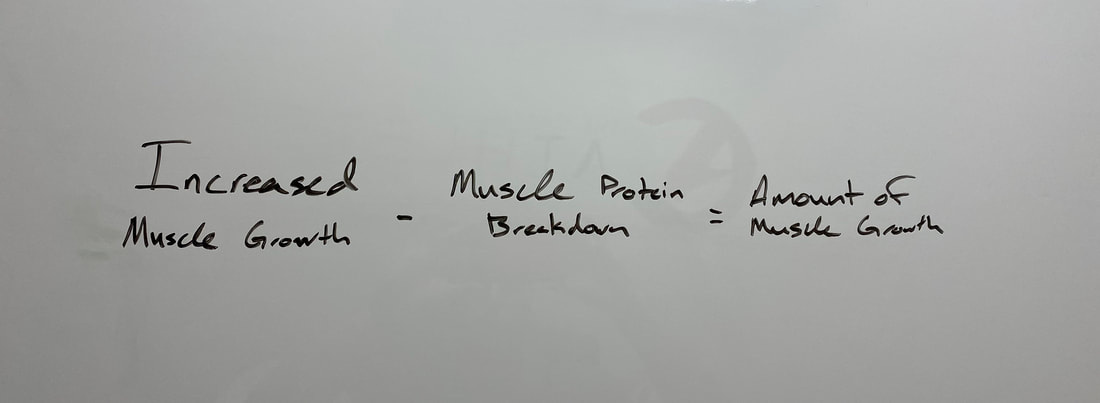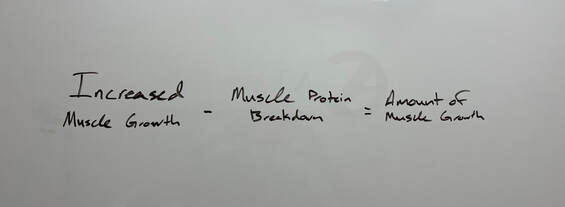
Sounds crazy, right? NOPE! It’s incredibly safe AND can produce some wild gains! Let’s jump right in. Blood Flow Restriction Training (BFRT) is a common treatment method with over 20 years of research, but has only recently started to become a staple in performance PT practice. The primary purpose behind BFRT is to stimulate muscle hypertrophy (muscle growth) which ultimately allows the muscle to become stronger. In the next few paragraphs, I’m going to cover what exactly it is, how it works on the muscles, and how it can work for your athletic and fitness goals!
What is BFRT? BFRT utilizes a band or cuff placed tightly around a limb to reduce blood flow while you exercise. It doesn’t completely cut off blood flow, but just enough to allow blood flow into a limb, and prevent the flow back out to the heart. These changes in blood flow allow the muscles to use up all of the oxygen available. This creates an advantageous environment which allows us to use low intensity exercise, but still get the benefits of higher intensity training!

Yeah, yeah I know…. train at low intensity and get the benefit of training at high intensity, it sounds like a gimmick. Even I was skeptical of its benefits at first. But after diving into the science and research behind it, it was easy to see how this has made its way into the rehab and performance realm! So, let’s take a look at how it works!
How Does BFRT Work?The starting point for how BFRT works actually begins at the muscle. How does a normal muscle get bigger and stronger? I could put you to sleep reviewing all the different physiologic pathways involved with muscle growth, but simply put, it’s a combination of mechanical load (how heavy weights are), volume (how many times you lift those weights), neural stimulus (high vs low intensity), and metabolic processes (protein consumption and hormonal changes).
In terms of muscle growth, the hormones and metabolites created from exercise are the key. Big, multi-joint exercises (ex: squats, deadlifts, or push ups), high load (heavy weights), and high intensity, yield high releases of muscle growth hormones such as testosterone, and human growth hormone among others. The important word though is “high load.” However, there’s a second piece to the puzzle. Just like you need lumber for a contractor to build a house, these hormones need protein to build muscles. To ensure the desired muscle growth, there must be adequate protein intake to allow for more muscle building than muscle breakdown from exercise.

The heavier you lift, for more reps, using less rest, results in larger muscle gains. Easy right? Except we said previously that BFRT works best at low intensities, which wouldn’t fit the bill for muscle growth… so we need to dive a little deeper into the metabolic processes involved here to learn how BFRT really works!!
So, BFRT reduces the amount of blood flowing to limbs, which limits the amount of oxygen to the muscles. Think of oxygen as the fuel to the muscle. So, when the muscles work while under blood flow restriction, we start to use up all that fuel. As the fuel supplies reduce, it accelerates fatigue (burn, baby burn!) and it becomes an “all hands-on deck” situation for the muscle causing it to recruit more and more motor units (more muscle) to complete the movement!
Ready for the cool part? By restricting blood flow and creating this “all hands-on deck” situation for the muscle, we stimulate those same protein synthesis pathways that are involved in muscle building after heavy workload days.
This results in the increased release of the hormones and metabolites mentioned above that are coming to repair and rebuild muscle. You only have to use BFRT once to know this, because you will 100% feel it as an insane pump!

Here’s the even better part: BFRT results in significantly less muscle breakdown during the session as traditional high load training. So those same metabolites and hormones brought to the area have less repair to complete and get to focus more on building. It also means that BFRT should result in less delayed onset muscle soreness (DOMS) #gamechanger.

Remember this equation? Well, BFRT ramps up the muscle growth side, and decreases the muscle breakdown side. I may not be the best at math, but I do know that those changes to the equation will result in bigger gainz!
Now… here’s the disclaimer. BFRT used alone without heavy lifting is inferior to high load training alone. In the words of Mr. Olympia Ronnie Coleman “Everyone wants to be a bodybuilder, but don’t nobody wanna lift heavy a** weight.” This still holds true even with the introduction of BFRT. Don’t be discouraged though, the next section goes through who will benefit the most from BFRT (Hint: Mostly everybody!)
Who can benefit from BFRT if it doesn’t replace high load training?
1. Those who currently can’t lift heavy:
- This first one is the low hanging fruit that has made BFRT a staple in the rehab world today.
- Post-operative patients: The clients who have had surgery and are under surgical precautions that limit their ability to bear weight, limit the movements they can do, and limit the weight they can lift. In my opi required for these clients due to its ability to prevent muscular atrophy, increase muscle growth, and ability to continue to work the affected limb within the surgeon’s precautions as they work back to lifting heavy.
- Non-surgical tendinopathy patients: Tendon pain greatly reduces the muscle’s ability to contract and lift heavy weight. For example, Achilles tendinopathy may drastically limit your ability to do a calf raise, get into triple extension in an olympic lift, or run. So, how are you going to lift heavy or improve cardio fitness if pain is limiting even the movement? Enter BFRT. Low intensity and pain free stimulus, while under BFR, to get the metabolic effects of BFRT while allowing the tendon to heal. Similar to the post-operative patient, it also sets you up to come back with more normal strength after a period of being away from high load training!
2. Fully healthy CrossFit, Olympic Weightlifter, bodybuilder, ball/stick sport, and endurance athletes:
- Both the CrossFitter and Oly lifter have very demanding workout regimens. Oftentimes , to be competitive, this requires multiple skill/weight training workouts within the same day. With this schedule, it’s very difficult to add any heavy load/volume workouts without leading down a path of overtraining. BFRT becomes an excellent adjunct to work on those weak areas without adding significant volume, and limiting the amount of muscular breakdown and soreness from extra work!
- Bodybuilders: The whole purpose behind bodybuilding is muscle hypertrophy. While we can’t replace heavy lifting, BFRT is an excellent addition as a finisher at the end of the workout. Depending on the workout split, using BFRT to target specific muscle groups will not only help achieve the desired pump, but the metabolic cascade that goes along with it – which can be very beneficial to maintaining muscle size!
- Ball/Stick Sport Athletes: The biggest benefit for these athletes is in-season use with little turnaround time between games. Sports such as baseball/softball, basketball, and hockey play so many games on a frequent basis it would limit performance to continually lift heavy within season. By adding BFRT training it allows them to continue to build strength without the deleterious effects on performance associated with the 24-48 hours after high load training (aka muscle soreness). In the offseason, while they are performing traditional high load/intensity training, BFRT becomes an effective recovery tool to increase the metabolic response to assist with the repair and building of muscles.
- Endurance Athlete: BFRT works great to maintain strength when ramping up endurance training for a race. Using lower intensity strength training with less muscular breakdown allows for maintenance from a previous strength phase without taking away from the training stimulus of the increased time spent focused on running/cycling/swimming. It is also useful as a recovery tool to help increase VO2 Max without excess stress on the bones or muscles!
The previous section highlights the most common uses of BFRT, but certainly isn’t fully comprehensive.
Here’s a quick recap of important points to remember:
- BFRT is a safe and effective way to promote muscle hypertrophy and strength in just about any athlete.
- While it cannot replace high load training, it can provide a low training load with a high metabolic effect to promote increased recovery and improved strength on weak spots while still allowing for a rigorous training schedule.
- It’s especially effective in reducing the deleterious effects of immobilization and surgical precautions. It may even be the missing key behind the loss of strength following surgeries such as ACL reconstructions where there is significant loss of Quad size and strength even up to 1 year after surgery.

We’re incredibly blessed to have this equipment to use with our patients at The Charlotte Athlete. Just over a year ago, I completed a BFRT certification course to further my knowledge on the benefits, effects, as well as experience firsthand use of the blood flow restriction cuffs. Since then, I’ve truly seen BFRT become a game changer within the rehab process AND performance training. If you have any questions, or are local and want to give it a try, hit the comment section and let us know! OR, if you’re in Charlotte, NC – click here if you want to schedule a session with us!
Cheers
-Dr. Mike


4 Responses
Itís nearly impossible to find well-informed people for this topic, but you seem like you know what youíre talking about! Thanks
This website truly has all of the information and facts
I needed concerning this subject and didn’t know who to ask.
Right here is the perfect site for everyone who wants to understand
this topic. You realize a whole lot its almost tough to argue with
you (not that I personally would want to…HaHa). You definitely put a brand new spin on a subject that’s been written about for many years.
Great stuff, just wonderful!
My partner and I stumbled over here by a different website and thought
I might check things out. I like what I see so now i’m following you.
Look forward to checking out your web page for a second time.